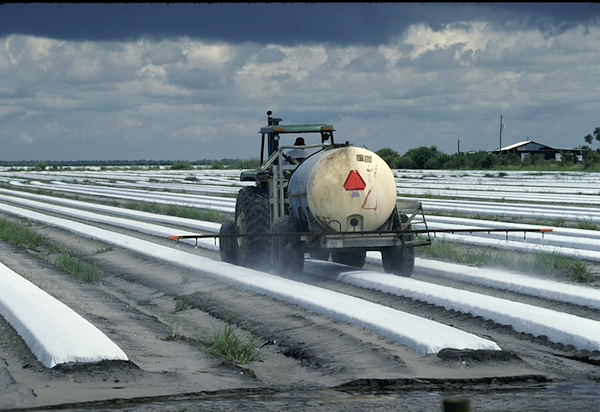SEJournal Online is the digital news magazine of the Society of Environmental Journalists. Learn more about SEJournal Online, including submission, subscription and advertising information.
 |
 |
| The U.S. Environmental Protection Agency is providing public access for the first time to pesticide incident data that it has been collecting as part of pesticide regulation programs mandated by law. Photo: U.S. Department of Agriculture via Flickr (Public Domain). |
Reporter’s Toolbox: Data on Pesticide Incidents Openly Available for First Time
By Joseph A. Davis
Pesticide data hounds and environmental journalists just caught a break. The U.S. Environmental Protection Agency has for the first time given the public access to its pesticide incident data — which previously could be pried loose only with a Freedom of Information Act request.
The data is online and searchable without restrictions as to who can access it. Find the press release, background and search portal.
The data is important, but so are the caveats that come with it. For example, the data is not always reliable or complete, so ground-truthing everything is key for journalists. That said, the data can be provocative and revealing — and can lead to serious stories.
The EPA seems to be pitching this move as an environmental justice action. And it is, or at least could be, a beginning. But it is hardly a secret that farmworkers and kids going to school near sprayed fields are at risk. So environmental journalists will be challenged to supply their own demographics.
Where the data come from
The EPA has actually been collecting most of this data all along, as part of pesticide regulation programs mandated by law (a good thing, because the feedback makes the EPA’s regs more effective).
The ongoing data-gathering program is called the incident data system. An “incident” is typically an event where a pesticide causes unexpected or unreasonable adverse effects. Some of the incidents may result from failure to use the pesticide properly, according to the instructions on the label.
Initially, the EPA is making 10 years'
worth of data available, and says
it will update the database.
Initially, the EPA is making 10 years' worth of data available, and says it will update the database.
The data itself comes from a variety of sources. That may make it harder to draw “statistically valid” conclusions about the national situation. It is not a random sample; it is skewed toward trouble.
An impressionistic summary of data sources includes:
- Poisoning incidents reported through the network of public health agencies and poison centers;
- Data about incidents reported to state regulators;
- Incidents reported by pesticide manufacturers;
- Incidents involving animals and wildlife;
- Data from the National Pesticide Information Center; and
- Other sources, such as direct reports from the public to the EPA.
Using the data smartly
We recommend using this data, first of all, as a warning system to identify pesticides and uses that could threaten human health and the health of non-target species. From there, you will probably want to do additional reporting on what the problem is, and its frequency and severity. Much less how to fix it.
The biggest mistake a reporter could make with this data is to overgeneralize the conclusions that can be drawn from it.
The EPA, itself, points out that, “It is important to recognize that the data sets contain raw data that have never been reviewed for their validity or modified to facilitate public review. The Agency did not design the incident reporting system to cover only information known to be valid, and as such, cannot guarantee the accuracy, completeness, or adequacy of the contents of the data sets.”
One public advocacy group that specializes in data, including data about pesticides, is the Environmental Working Group. It may be advisable to check in with them. Other public health advocacy groups include the Pesticide Action Network and Beyond Pesticides. The pesticide industry group in this area is CropLife America.
[Editor’s Note: For more on pesticides, see this recent Toolbox on pesticide data for food and ag reporting, TipSheets on pesticides on food and lawns, an Inside Story Q&A about covering the pesticide industry and a Backgrounder on pesticide regulation. Also be sure to check out our latest EJToday headlines on pesticides.]
Joseph A. Davis is a freelance writer/editor in Washington, D.C. who has been writing about the environment since 1976. He writes SEJournal Online's TipSheet, Reporter's Toolbox and Issue Backgrounder, and curates SEJ's weekday news headlines service EJToday and @EJTodayNews. Davis also directs SEJ's Freedom of Information Project and writes the WatchDog opinion column.
* From the weekly news magazine SEJournal Online, Vol. 8, No. 31. Content from each new issue of SEJournal Online is available to the public via the SEJournal Online main page. Subscribe to the e-newsletter here. And see past issues of the SEJournal archived here.












 Advertisement
Advertisement 



